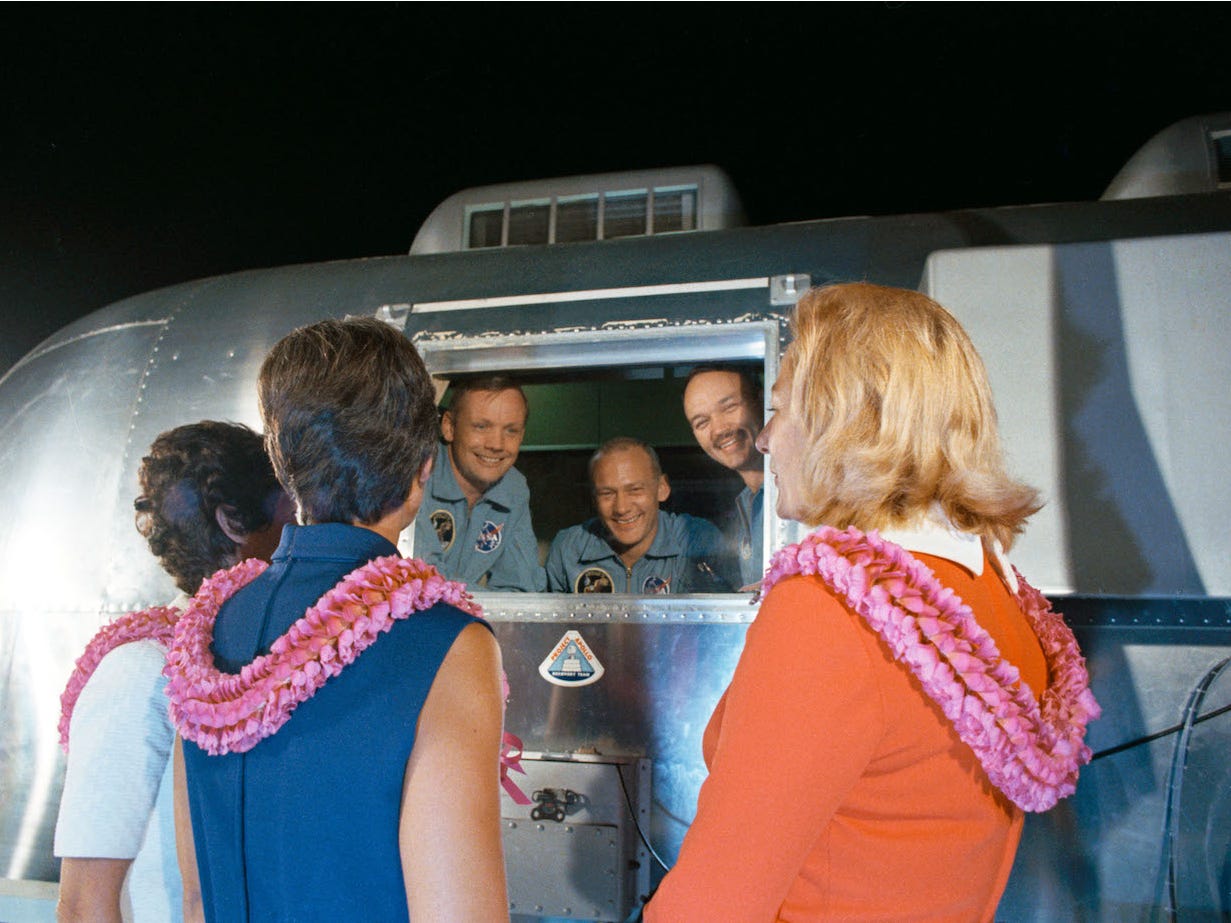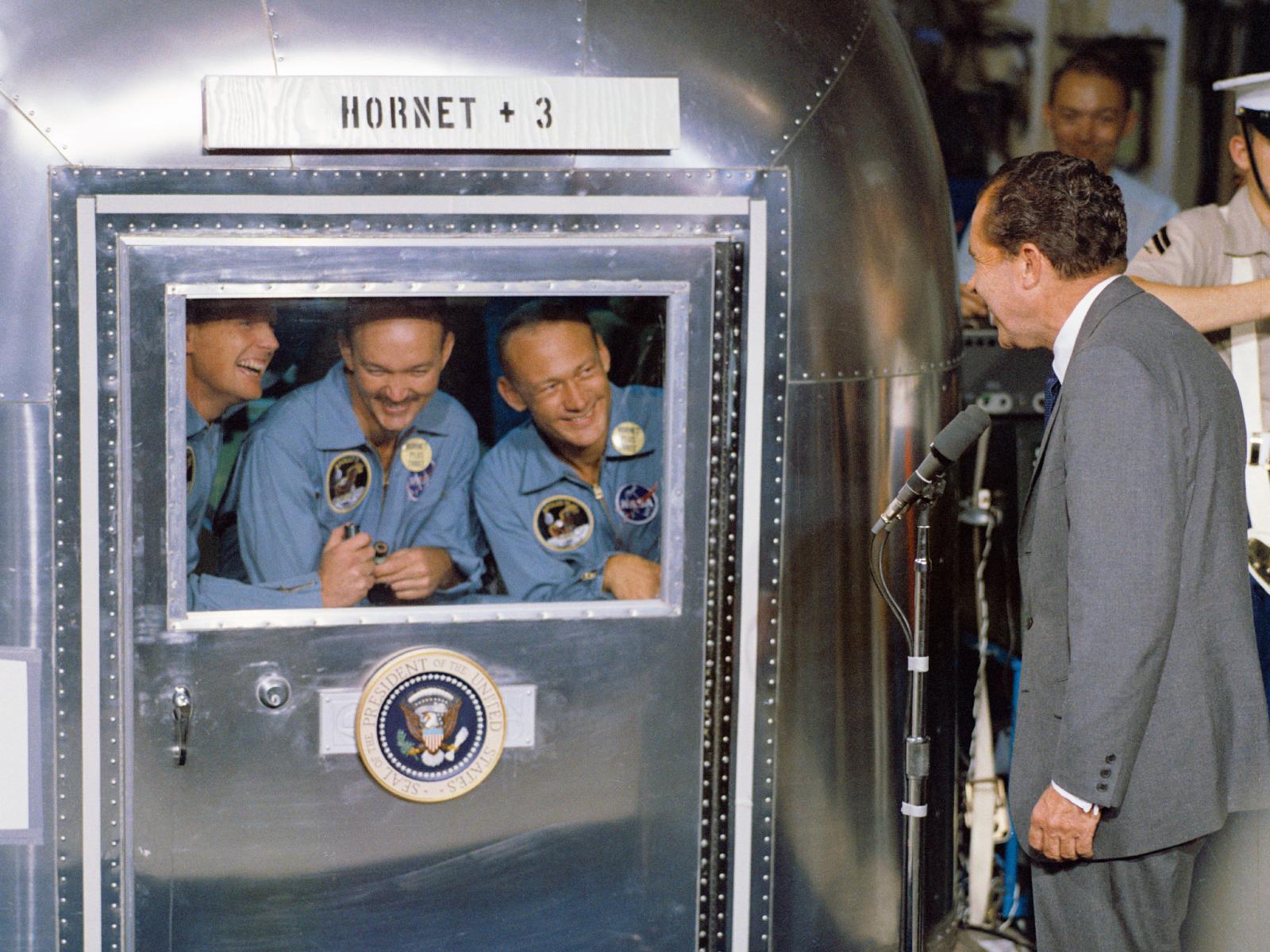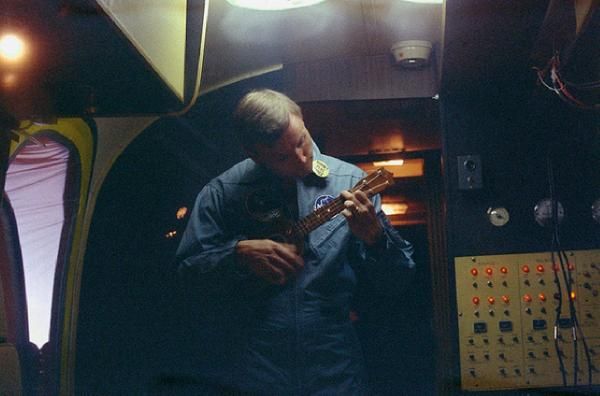What quarantine is like for an astronaut
Ukulele, a birthday party and strict rules.

People around the world are currently isolating themselves or in a formal quarantine to prevent the spread of the SARS-CoV-2 coronavirus. But for decades, astronauts have been quarantined to ensure that they were virus-free and ready to fly (or, in the case of Apollo, to make sure they didn't bring home any "moon bugs.")
This quarantine period "ensures that they aren't sick or incubating an illness when they get to the space station," NASA spokesperson Brandi Dean told Space.com.
So what is quarantine really like for an astronaut?
Related: The coronavirus pandemic and space exploration: Full coverage
More: Free space projects for kids at home due to coronavirus outbreak
Early spaceflight
In the early days of NASA's Apollo program, the astronauts of Apollo 7 ended up getting sick in space with colds and quickly ran out of medication and tissues. Although instances of astronauts getting sick in space are few and far between, these early issues led the agency to implement a preflight quarantine. Today, this is a two-week period where only controlled visits from close family are permitted. Implementing a preflight quarantine ensured that there was minimal risk of the astronauts bringing a virus with them to space.
Related: Routine quarantine helps astronauts avoid illness before launch
Later on, NASA quarantined the crews of Apollo 11, 12, 13 and 14 in the mobile quarantine facility (MQF) after their returns from the moon. The agency wasn't exactly sure what might be lurking on the moon and thought that there might be moon bugs, or moon sickness, that the astronauts could track home and contaminate Earth.
Get the Space.com Newsletter
Breaking space news, the latest updates on rocket launches, skywatching events and more!
The lunar samples collected by the astronauts were additionally quarantined in protected containers and handled in the controlled quarantine facility known as the Lunar Receiving Laboratory (LRL). Though this was largely to prevent Earth materials from contaminating the lunar samples.

Following splashdown, these crews spent 21 days in quarantine in the (MQF), a converted Airstream trailer. They had communication devices as well as living and sleeping facilities. The Apollo 11 crew famously spoke with Nixon through a window in the MQF using the communication equipment in the trailer. The astronauts did have a bit of fun while cooped up in the MQF, however.
Photos of these quarantines have revealed astronauts giggling, acting bored, reading newspapers and chatting. Apollo 11 commander Neil Armstrong even passed some of his time in the facility playing the ukulele.

The Apollo 11 crew even had a party while in quarantine, as Armstrong celebrated his birthday while still in post-splashdown quarantine.
In a recent interview with Ars Technica, Apollo 11 astronaut Buzz Aldrin said, about the quarantine experience, "Mike Collins and I used to exercise and jog a little bit around the hallway ... We looked at this one crack in the floor, and there were ants crawling in and out," suggesting that, if ants could get in and out that surely any kind of "moon bugs" or microbes they brought back could as well.
Aldrin added that, while in the MQF, he spent his time working on mission reports and finishing up paperwork, including a government voucher for $33.31 for his trip to the moon.
Following Apollo 14, NASA had found no evidence of biological activity in the lunar samples collected, nor any material that officials felt could be harmful. So, while the lunar samples remained quarantined and continued to be handled with care and caution, astronauts returning from the moon were no longer confined to the MQF after splashdown.
Related: The weirdest things Apollo astronauts left on the moon
Later years
Now while NASA's astronauts today might not get to hang out in the MQF, they do face preflight quarantines to ensure their health and safety. In addition to quarantine, astronauts typically undergo a physical examination known as the "L-10" 10 days before they launch. This further ensures that the crew members are not sick or infected before launching.
During the space shuttle program, the astronauts were quarantined but could have limited contact with other people.
However, once arriving at the NASA's Kennedy Space Center in Florida where the shuttles would lift off, the astronauts would enter a much stricter quarantine where the crew surgeon would be isolated with the crew. Two days before launch, the astronauts would undergo a second medical exam to make sure that they were in tip-top shape.
Present day
Today, the preflight quarantine, which is known as "health stabilization," is still an essential safety precaution when it comes to crewed launches. Astronauts spend the two weeks before their flight quarantined in their quarters, which are located in NASA's Kennedy and Johnson space centers, and in Roscosmos' Baikonur Cosmodrome in southern Kazakhstan.
During this two-week period, the astronauts have no direct contact with anyone who has not been cleared by NASA flight surgeons, Dean said.
While in quarantine, the astronauts spend their time prepping for the mission ahead of them. They prepare mentally, study up on flight procedures and make sure to both rest and work out to ensure that they're in peak physical and mental condition for their flight. They also spend time making video calls and chatting with friends and family. It is not known if any of the astronauts bring ukuleles with them into quarantine like Armstrong.
Even with these intense precautions, astronauts have gotten sick in space. However, These cases are especially rare now given that astronauts travel to space with such regularity. In fact, our presence in space has grown so much that, since 2000, the space station has never been without astronauts on board. So those born before 2000 have never lived a day when there were no humans in space.
Coronavirus changes
Recently, NASA space station program manager Kirk Shireman revealed that, with the upcoming Soyuz launch on April 9, 2020, concerns regarding the coronavirus pandemic will likely extend the preflight quarantine period.
It is still unknown exactly how quarantine procedures might change for this specific flight or future flights, but NASA is addressing concerns surrounding the illness head-on.
NASA Administrator Jim Bridenstine has mandated that all nonessential mission personnel at the agency work from home.
"NASA is closely adhering to the CDC's recommendations on infection control for the coronavirus," Dean said, further adding that this includes "cleaning of surfaces, social distancing, emphasizing hand hygiene, limiting social contact whenever possible and asking NASA team members who are sick to stay home, even if they would otherwise fall into the telework exceptions."
- Space stress: How 1-year mission is studying astronaut health
- How spacefaring rodents adapt to life in space (Video)
- The human body in space: 6 weird facts
Follow Chelsea Gohd on Twitter @chelsea_gohd. Follow us on Twitter @Spacedotcom and on Facebook.
OFFER: Save at least 56% with our latest magazine deal!
All About Space magazine takes you on an awe-inspiring journey through our solar system and beyond, from the amazing technology and spacecraft that enables humanity to venture into orbit, to the complexities of space science.
Join our Space Forums to keep talking space on the latest missions, night sky and more! And if you have a news tip, correction or comment, let us know at: community@space.com.

Chelsea “Foxanne” Gohd joined Space.com in 2018 and is now a Senior Writer, writing about everything from climate change to planetary science and human spaceflight in both articles and on-camera in videos. With a degree in Public Health and biological sciences, Chelsea has written and worked for institutions including the American Museum of Natural History, Scientific American, Discover Magazine Blog, Astronomy Magazine and Live Science. When not writing, editing or filming something space-y, Chelsea "Foxanne" Gohd is writing music and performing as Foxanne, even launching a song to space in 2021 with Inspiration4. You can follow her on Twitter @chelsea_gohd and @foxannemusic.









